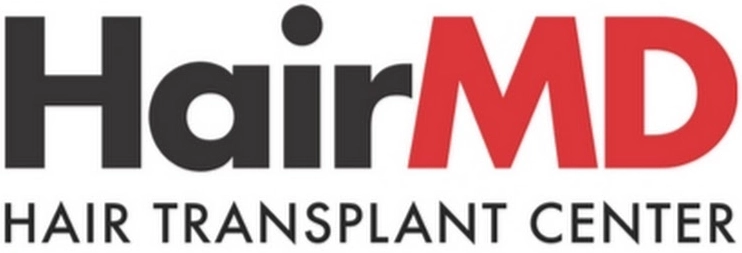13th April, 2022

Can a dermaroller help with hair loss? Learn how this popular microneedling tool works to stimulate hair growth and whether it’s an effective treatment option for you.
A derma roller is a device with medical-grade steel microneedles on a rotating wheel attached to a handle. It is used to create micro-holes on the scalp. These holes penetrate the skin just deep enough to stimulate new cell production and boost circulation, as well as help in the penetration of topical medications.
Dermaroller for hair loss is ideally used as a supportive treatment to traditional hair loss treatments. For example, it can additionally support Minoxidil and Finasteride, Platelet-Rich Plasma (PRP) therapy and so on. Controlled injuries create microchannels. These aids the quick absorption of the injected PRP and other topical products used on the scalp.
The injuries caused by the microneedles of the dermaroller induce the platelets to release growth factors at the injury site. They “awaken” dormant hair follicles to begin the production of new hair. Patients having grade 2 to grade 5 baldness are ideal candidates for using dermaroller for hair loss. It causes minimal pain and damage. This process is also known as ‘micro needling’. The derma roller has been used as a beauty device for decades to renew the youthfulness of skin.
What’s covered in the article?
- How Does Dermaroller Work For Hair Regrowth?
- Dermarolling As An Agent For Skin Cell Proliferation
- Dermaroller As A Supportive Treatment
- How To Use Dermaroller?
- What Size Dermaroller Should I Use For Hair Loss?
- How To Choose The Right Derma Roller?
- Post-Treatment Aftercare
- Conclusion
How Does Dermaroller Work For Hair Regrowth?
The controlled micro-injuries made by derma roller hair treatment to the scalp trigger the skin’s repair process. The micro channels created due to this helps in the proper absorption of topical medicines, thereby producing the desired outcome.
Dermarolling As An Agent For Skin Cell Proliferation
Dermarolling has an important role to play in skin cell proliferation. It is beneficial in the regrowth of hair, treatment of wounds, and scars. Furthermore, it also helps to treat hyperpigmentation. The procedure induces the following three-step healing process:
- Inflammation
- Proliferation
- Remodeling (maturation)
This is the same natural healing process that wounds undergo. Generally, the remodeling phase can lead to scarring. However, dermaroller does not cause scarring as the micro holes made in the scalp do not penetrate deep enough.
The microneedles on the derma roller just go deep enough to initiate the wound healing process. The microneedles on the derma roller help to increase blood flow to the hair follicles. This activates the skin’s natural regeneration process.
Dermaroller As A Supportive Treatment
Along with skin cell proliferation and wound healing, the use of a derma roller significantly enhances the absorption of topical medications applied to the scalp immediately before or after rolling. This massive boost in the absorption rate makes dermaroller a very effective supportive treatment to the traditional hair loss treatments using topical treatments such as Minoxidil or Finasteride. Dermarolling creates temporary channels in the skin. These channels close within 30 minutes to an hour. Hence it is essential to apply the topical treatments immediately for maximum effect.
How To Use Dermaroller?
Use the derma roller only on dry hair, as using it while hair is wet can lead to tangling and breakage. Roll it from roots to ends. This is to avoid pulling healthy hair out of the follicles. Place the device at the edge of the area that is losing hair, e.g. the hairline, or the outside of the crown. Roll it slowly over the area, in a star-shaped pattern. The device should penetrate the scalp with enough pressure to cause a slight prickling or tingling, but not enough to cause pain.
Focusing on one section of the scalp at a time, roll each area 5-6 times. You can follow this pattern:
→ 3 rolls in this direction
↑ 3 rolls in this direction
↖ 3 rolls in this direction
↗ 3 rolls in this direction
You can use this technique on all areas undergoing balding or even on the entire scalp, once or twice a week. Clean the derma roller after each use with rubbing alcohol or antibacterial soap. After it dries, place it in the protective case or pouch until the next use.
Apart from knowing the right ways to use the derma roller, it is also important to understand some of the important tips that can enhance your experience even better. Here are some of the tips that you can follow to get an even better result out of the technique.
- When you run the derma roller on the scalp, the channels open up that stay open for a maximum of 1 hour. Thus, you should apply the medication as soon as you have run the roller on your scalp so that the medication can enter the scalp much better.
- If you do not have any prescribed medication for your scalp, you can also use castor oil just after running the roller on your scalp.
- It is best to run the roller and use the medication or the oil at night before going to bed. You must have heard how moisturizers or night creams work the best on your skin at night while you are sleeping. Similarly, the treatment works the best on your scalp while you are sleeping at night.
What Size Dermaroller Should I Use For Hair Loss?
If an experienced practitioner is conducting the derma rolling at the clinic, the needle size can be between 1.5 mm-2 mm.
Using the right derma roller size for hair regrowth will help you in getting effective results.
How To Choose The Right Derma Roller?
While you are searching for an ideal derma roller for hair regrowth, there are some important factors that you should keep in mind.
The Needle Size:
The very first thing that you should keep in mind while getting a perfect derma hair growth roller is the size of the needles. As mentioned above, if you are buying the tool to use at home, a needle size between 1.5 mm – 2 mm is an ideal one.
The Design:
If you are not able to hold the roller properly in your hand, you won’t be comfortable using it. Hence, you should get a derma roller for hair loss that has an ergonomically friendly design so that it fits in your hand conveniently while you use it on your hair smoothly.
Needle Material:
Along with the size of the needles, you should also have a look at the material of the needles. The needles made up of titanium alloy are known to be the most efficient ones as they puncture into your scalp exactly in the amount that is required for the treatment.
After you have got the best hair reactivating dermaroller, you should also keep in mind to take care of it to keep it durable and in the best shape for a much longer time. You should clean the roller after each use and should dry it properly and pack it to store at a proper place.
Post-Treatment Aftercare
As derma rolling is a non-invasive treatment there are no side effects and no downtime. This means that patients can return to their daily activities immediately after the procedure.
For more details about using dermaroller for hair loss, speak to a dermatologist.
Book an appointment with a HairMD expert today!
Do You Know?
Nearly 250 Patients Visit HairMD
Everyday For Various Hair Concerns?
(You are one click away from flawless skin)
Meet Our Dermatologists
Conclusion
Using a dermaroller for hair loss can be a beneficial addition to your hair care routine, as it helps stimulate blood circulation and promote hair growth. However, it’s crucial to use the tool correctly and combine it with the right treatments for the best results. Always consult a dermatologist before starting any new hair loss treatment to ensure it’s safe and effective for your specific needs.
Further Reading
Rosemary Oil for Hair Growth: Benefits and Side Effects
Explore the benefits of rosemary oil for hair growth & learn about its potential side effects. Our guide covers how to use rosemary oil to promote healthy hair growth.
How Much Hair Loss is Normal for Teenage Male?
Understand normal hair loss in teenage males and when it may signal an issue. Visit HairMD Pune for expert advice on teenage hair health and treatment options.
Ultimate Food Guide For Healthy Hair
Struggling with hair fall? This Food For Healthy Hair guide shares easy diet tips to support stronger, healthier hair naturally.
How to remove scabs after Hair Transplant? | HairMD
The correct way to remove scabs after hair transplant without damaging grafts. Get expert-backed tips from HairMD Pune to support a smooth recovery.
Have thoughts? Please let us know
We are committed not only to treating you, but also educating you.











